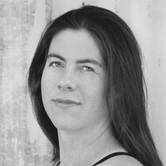Yoga Light Within You: 12 Sanskrit Words for Winter Meditations

Article At A Glance
In the moments when we are feeling less receptive to the light within, it doesn’t mean the light is not there. Yoga teaches that deep inside us; there is always light. That is why Patañjali advises us in Yoga Sutra I.36 to meditate on the light within.
Yoga sutra I.36: viśokā vā jyotiṣmatī
“We can be free of suffering by paying attention to the light within.”
When we experience the long nights and short days of the winter season, we can benefit from a deeper look at yoga teachings on light and darkness and explore what they have to say about the inner and the outer, body and mind, the transient and the eternal. It may be difficult to remember during the darkness and cold of diminished light, yet yoga philosophy suggests there is a light within that never wanes.
The Changing and Non-Changing Nature of Life
First, let’s introduce two ancient Sanskrit words: The ancient yogis saw our being as spiritual creatures made up of (word #1) prakṛti [prak-rit-ee] and (#2) puruṣa [poo-roo-sha].
Prakṛti is our body (it is also a word used to mean “nature”). It is all that is changing in us, or, in other terms, and this is not always obvious: the body-brain system. It is not always obvious because we identify with something that is changing, thinking that it is something permanent.
Puruṣa is all that is not changing within us, sometimes defined as the soul, pure awareness, or in some other contexts, “consciousness.”
Puruṣa is the light that never wanes.

Now a third and fourth Sanskrit word: Patañjali (#3), who compiled the Yoga Sutra-s sometime around 350 CE, uses the word īśvara (#4) to mean a Higher Power. Iśvara is the source of light, or pure awareness or consciousness; through puruṣa (our individual light as experienced by us), we are connected to this one light, the source of all light, awareness, and consciousness.
Now, the interesting question arises, if reality and our relation to reality are constructed like this, how is darkness possible? How can depression, wrong action, confusion, illness, and a sense of disconnect from light and wholeness, arise? This is an ancient question and a living one.
Here are some things to ponder from the yoga teachings and their related philosophies. These are suggestions we can more than ponder but test in our own lives and in our yoga practice to discover for ourselves what they might mean.
The Sanskrit word number 5 is prāṇa or life force. The ancient yogis saw health as a smooth flow of prāṇa within the body-brain system. Since our body is made of matter, it has limitations or a conditioned nature. We experience that conditioning, yoga suggests, through the guṇas (#6) or tendencies. The guṇas influence matter very strongly. Just as electricity can’t pass through wood, but it can pass through copper, the body’s receptivity to prāṇa will change. According to yoga, the guṇas govern this receptivity.
The guṇas are sattva (#7: balance, order, purity), rajas (#8: change, movement, dynamism), and tamas (#9: lethargy, dullness, slowness).
The Wholistic View in Yoga
Now, to bring this full circle and to see the interconnected, holistic view of reality to which yoga is inviting us, the guṇas also qualify the seasons. Sattva is springtime, with its creative potential and all that blossoms with it. Rajas is the summer, it is hot, and people move around and travel. Tamas is associated with fall and winter, as it gets darker and colder.
The seasons are a reflection of the guṇas of the world. When people talk about nature or the environment, we usually understand it to be the external world. However, according to yoga philosophy, the internal environment is just as or even more important than the external.
In the moments when we are feeling less receptive to the light within, it doesn’t mean the light is not there. Our receptivity is different in accordance with our state of mind. Yoga suggests that deep inside us, there is always light. That is why Patañjali advises us in Yoga Sutra I.36 to meditate on the light within.
YS I.36 viśokā vā jyotiṣmatī
“We can be free of suffering by paying attention to the light within.”
The Absence of Suffering: The Light Within

Viśokā (#10) literally means “no despondency.” When grief is sustained, it becomes despondency. Everyone has bad experiences in their lives, but when we identify with those past experiences, we negate our reception of light. According to yoga philosophy, there is always an inward resource.
Jyoti (#11) is our inner light, and jyotiṣmatī (#12!) means “to focus on the light within.” So, there is no despondency when we pay attention to the light inside.
In times when we feel darkness or depressed, the yoga teachings suggest that we don’t need to search outside – we can be inspired by the source of light inside. The next time you are in a state that feels disconnected, try your yoga practice. Did that feeling turn out to be a reality, or does it change when your body-breath-mind state changes?
The teachings of yoga seem to be suggesting something further as well, beyond helping us return to equilibrium. Here seems to be a key point: both suffering and joy are only possible in something that changes. When you begin to become sensitive to the changeable, transient nature of prakṛti, you might ask: What lies beyond all the changes? What is the source of both light and dark? What is there that never changes?
That may be the eternal quest.
The original version of this article was posted on the Huffington Post.
 Rowan Lommel teaches yoga to individuals with diverse backgrounds and conditions. She studied in India at the Krishnamacharya Yoga Mandiram and has worked with TKV Desikachar and his most serious students. She did teacher training at the Healing Yoga Foundation in San Francisco. The work of J. Krishnamurti has been deeply inspirational to her. She has been teaching yoga since 2001 and now maintains a private yoga therapy practice in Ojai and Santa Barbara. Her work focuses on supporting individuals discover a sacred, still space through personal practice. Learn more at www.yogapotentials.com. She also blogs for the Huffington Post and teaches yoga at a mindfulness course at UCLA.
Rowan Lommel teaches yoga to individuals with diverse backgrounds and conditions. She studied in India at the Krishnamacharya Yoga Mandiram and has worked with TKV Desikachar and his most serious students. She did teacher training at the Healing Yoga Foundation in San Francisco. The work of J. Krishnamurti has been deeply inspirational to her. She has been teaching yoga since 2001 and now maintains a private yoga therapy practice in Ojai and Santa Barbara. Her work focuses on supporting individuals discover a sacred, still space through personal practice. Learn more at www.yogapotentials.com. She also blogs for the Huffington Post and teaches yoga at a mindfulness course at UCLA.


